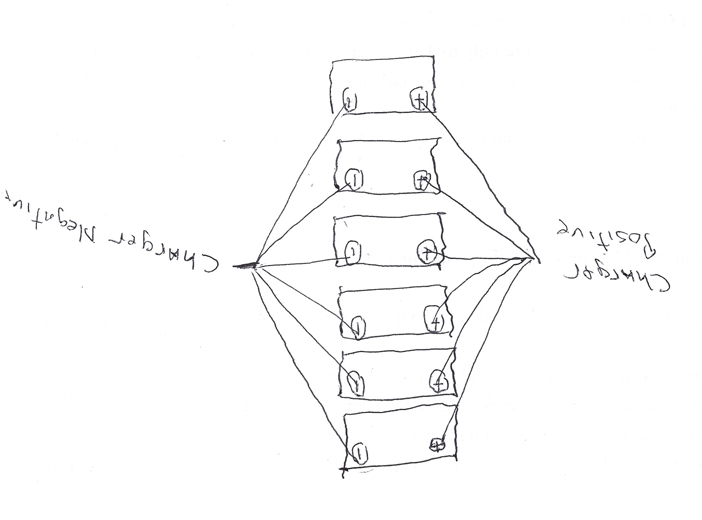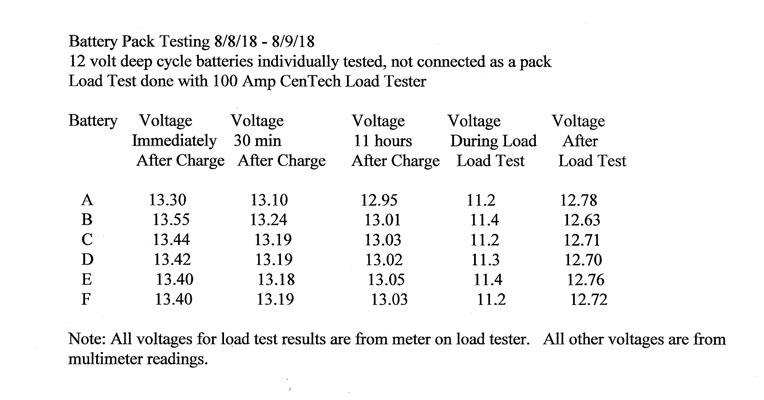cboy
100 W
I have a Kelly ZJW 72V/400 amp contactor which powers dual Kelly KLS 7230S controllers and dual QS Motors hub wheels. A few days ago (as some of you may have seen in my post on that issue) I couldn't get the batteries (6 lead acid deep cycle) to charge above 74 volts. Turned out to have been a blown fuse in the charger resulting from the charger contacts be wired in reverse. Once that wiring was corrected, the batteries charged up without a problem.
This morning, however, when I went to turn the bike on there was no power to the ignition circuit. That was quickly traced to a blown fuse in that circuit. Using my Power Probe (a dead short detector) I quickly traced the cause of the blown fuse to a "short" in the wire leading to the contactor relay. But then things started to get confusing.
The positive side of the relay is fed off the ignition switch and a 2 amp fuse. The negative side of the relay goes to a grounding pin on each of my controllers. My Power Probe indicates those controller ground pins are ALWAYS a dead short to ground...whether the key switch is on or off. I'm not sure if this should be the case but that is what the testing shows.
If I disconnect the ground wire between the relay and the controllers, my ground short in the relay wire disappears.
If, in fact, the controller ground pins are always grounded to the battery negative terminal, what limits the amount of amperage through the wiring? Is it the "draw" of the relay coil or is there some sort of limiter within the controller that prevents full battery amperage from going to ground? If I am diagnosing the problem correctly it seems the relay wire is drawing full amperage out of the battery pack and sending it directly to ground...so a major load of juice. Could that indicate a malfunction in the relay coil that then allows full amperage to go to ground?
And then there is the issue of "why now?" The system was functioning well. Then I blew the fuse on my smart charger because the leads were installed backwards. But even after that blown fuse, the system was functioning properly. I could turn the key switch on and off and all the systems responded...the controllers would come on and the Cycle Analyst would come on and give a current battery reading. This issue (the blown fuse in the contactor relay circuit only arose AFTER I rewired the smart charger correctly and AFTER it had fully charged the batteries. Now nothing comes on since the controllers, the Cycle Analyst and the key switch are all on the same fuse as the contactor relay.
Here are the results of some of the diagnostics I have done thus far.
* The contactor relay wire will show a short to ground with the key on
or the key off. I have the contactor relay grounded to pin 6 of
controller A and to pin 6 of controller B. The pin itself, (pin 6 on
both controllers) always shows it is shorted to ground whether the key
is on or off. This may be normal...don't know.
* With the contactor relay diode in place and all other wires
disconnected , I get a multimeter continuity reading of 286 Ohms when the
probes are on the incoming tab of the relay and the ground side tab of
the relay. With the probes in the same positions, the multimeter shows
a diode reading of .147 volts.
* I have tested the diode when removed from the relay. I get a reading
of 31.4 k Ohm in resistance mode and .471 Volts in diode testing mode. I also tested an identical "new" diode and got almost the exact same readings. Do I think the diode is good.
* With the contactor relay diode removed and a jumper wire installed in
its place, I get a resistence reading of 7 Ohms. Diode reading on the multimeter is
obviously zero.
* With the ground wires connected from the relay to the controllers, my
Power Probe (ground short detector) indicates a short to ground when I
touch the incoming (hot in) tab of the relay. If I disconnect the
ground wires to the controllers, no short is detected.
* I tried testing the amperage across the fuse holder while the
contactor circuit was connected, but with just the slightest touch of
the probe I got a major spark which actually melted the tip of the
probe. So this appears to be a major league short to ground.
This morning, however, when I went to turn the bike on there was no power to the ignition circuit. That was quickly traced to a blown fuse in that circuit. Using my Power Probe (a dead short detector) I quickly traced the cause of the blown fuse to a "short" in the wire leading to the contactor relay. But then things started to get confusing.
The positive side of the relay is fed off the ignition switch and a 2 amp fuse. The negative side of the relay goes to a grounding pin on each of my controllers. My Power Probe indicates those controller ground pins are ALWAYS a dead short to ground...whether the key switch is on or off. I'm not sure if this should be the case but that is what the testing shows.
If I disconnect the ground wire between the relay and the controllers, my ground short in the relay wire disappears.
If, in fact, the controller ground pins are always grounded to the battery negative terminal, what limits the amount of amperage through the wiring? Is it the "draw" of the relay coil or is there some sort of limiter within the controller that prevents full battery amperage from going to ground? If I am diagnosing the problem correctly it seems the relay wire is drawing full amperage out of the battery pack and sending it directly to ground...so a major load of juice. Could that indicate a malfunction in the relay coil that then allows full amperage to go to ground?
And then there is the issue of "why now?" The system was functioning well. Then I blew the fuse on my smart charger because the leads were installed backwards. But even after that blown fuse, the system was functioning properly. I could turn the key switch on and off and all the systems responded...the controllers would come on and the Cycle Analyst would come on and give a current battery reading. This issue (the blown fuse in the contactor relay circuit only arose AFTER I rewired the smart charger correctly and AFTER it had fully charged the batteries. Now nothing comes on since the controllers, the Cycle Analyst and the key switch are all on the same fuse as the contactor relay.
Here are the results of some of the diagnostics I have done thus far.
* The contactor relay wire will show a short to ground with the key on
or the key off. I have the contactor relay grounded to pin 6 of
controller A and to pin 6 of controller B. The pin itself, (pin 6 on
both controllers) always shows it is shorted to ground whether the key
is on or off. This may be normal...don't know.
* With the contactor relay diode in place and all other wires
disconnected , I get a multimeter continuity reading of 286 Ohms when the
probes are on the incoming tab of the relay and the ground side tab of
the relay. With the probes in the same positions, the multimeter shows
a diode reading of .147 volts.
* I have tested the diode when removed from the relay. I get a reading
of 31.4 k Ohm in resistance mode and .471 Volts in diode testing mode. I also tested an identical "new" diode and got almost the exact same readings. Do I think the diode is good.
* With the contactor relay diode removed and a jumper wire installed in
its place, I get a resistence reading of 7 Ohms. Diode reading on the multimeter is
obviously zero.
* With the ground wires connected from the relay to the controllers, my
Power Probe (ground short detector) indicates a short to ground when I
touch the incoming (hot in) tab of the relay. If I disconnect the
ground wires to the controllers, no short is detected.
* I tried testing the amperage across the fuse holder while the
contactor circuit was connected, but with just the slightest touch of
the probe I got a major spark which actually melted the tip of the
probe. So this appears to be a major league short to ground.



